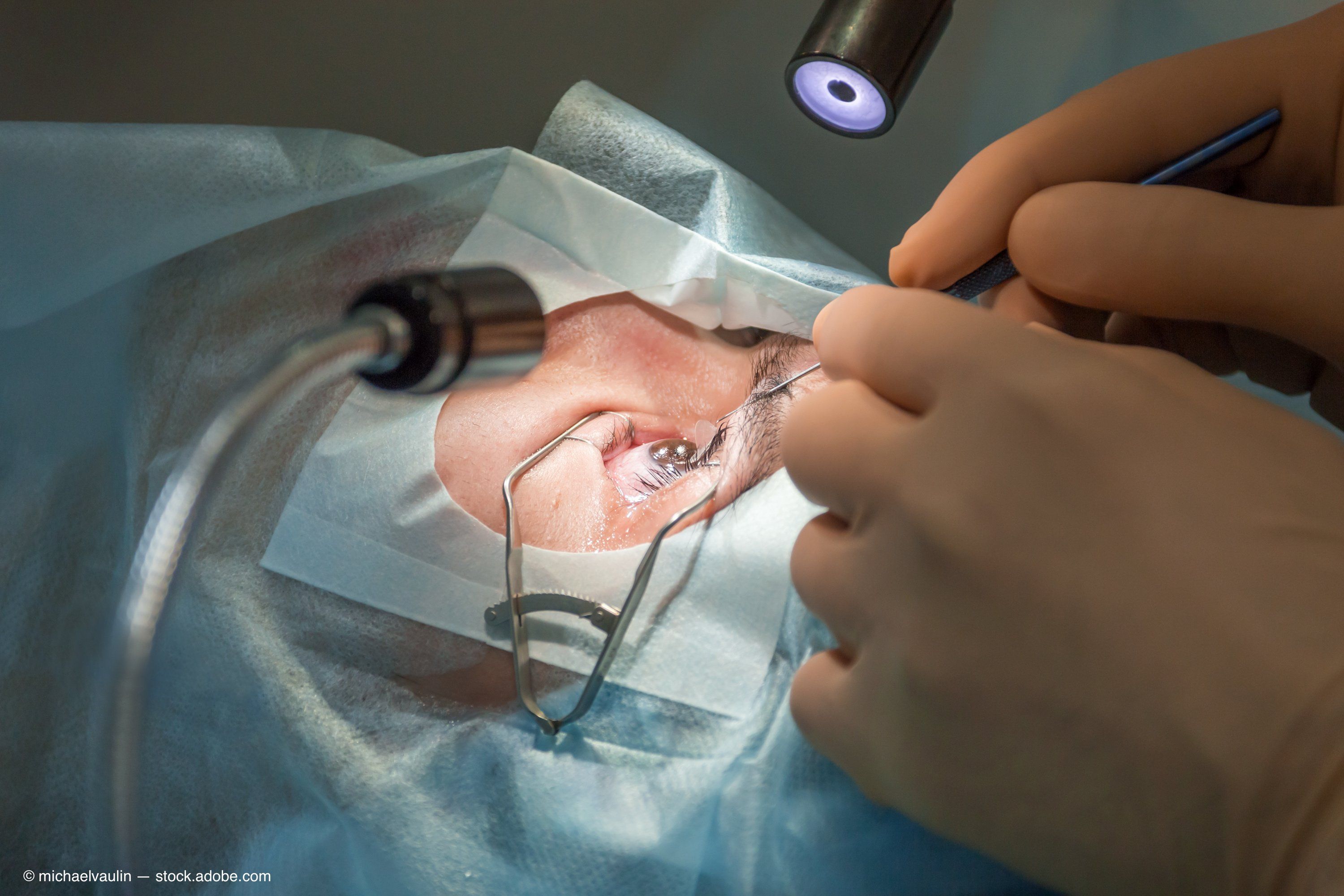Article
Haigis-TK power calculation formula provides best error prediction after LASIK
Author(s):

Takanori Suzuki, MD

The Haigis-TK formula had the smallest prediction error for calculating IOL powers after LASIK.
This article was reviewed by Takanori Suzuki, MD, and Kazuno Negishi, MD
Calculating the IOL power for use after LASIK can be tricky because a number of factors come into play.
The results of a comparison of six formulas used to calculate the IOL powers found that the Haigis-TK had the smallest arithmetic prediction error and the highest percentage of eyes within 0.50 D of the predicted errors after LASIK.
“It is difficult to estimate the IOL power calculations after LASIK Several formulas have been developed over the past decades, but most of them were calculated using keratometry,” said Takanori Suzuki, MD, lead author of the study.
Dr. Suzuki made a presentation at the American Society of Cataract and Refractive Surgery Virtual Annual meeting.
According to Dr. Suzuki, things changed with the introduction of the IOLMaster 700 with swept-source optical coherence tomography, which was introduced to the market in late 2018.
“With this instrument, it became possible to analyze the total keratometry power, including the anterior and posterior corneal curvature,” he said.
“While conventional keratometers measure the radius of the anterior corneal curvature, the keratometric index of refraction refers to a theoretical single refractive lens representing both corneal surfaces based on the assumption that a ratio of anterior to posterior corneal curvature is constant,” he explained. “Such an assumption works well in virgin eyes; however, it becomes invalid in post-LASIK eyes because the anterior corneal curvature is altered by corneal refractive surgery and the ratio is changed. Total keratometry may be able to resolve this issue.1”
Related: Avoiding IOL refinements after presbyopia-correction surgery
The study
Dr. Suzuki and colleagues conducted a study in which they evaluated the accuracy of the IOL power calculation formulas in Japanese eyes after LASIK and determined the amount of error detected using each of the six formulas.
In addition to the Haigis-TK and the Barrett TK Universal II, both of which measure the total keratometry, the other formulas tested were the Barrett True K, Haigis-L, A-P method (SRK/T), and the Binkhorst II (Camellin-Calossi), all of which measure conventional keratometry.
Ten patients (10 eyes) (mean age, 54.6 years) were included in the study. All had undergone phacoemulsification and aspiration with IOL insertion after LASIK at Keio University Hospital, Tokyo, Japan, with over one month of follow-up.
The mean preoperative axial length was 25.60 mm, keratometry 39.93 D, and total keratometry 39.28 D. The difference between the keratometry and total keratometry values was 0.65 D, and mean subjective refraction (SE) was -1.18 D.
Three surgeons performed the surgeries. The IOLs that they opted to implant were either the ZCB00 in seven cases or the ZCB00V in three cases. Both IOL models are from Johnson and Johnson Vision.
The investigators defined the predicted error as the difference between the subjective refraction (SE) one month postoperatively and preoperative predicted SE for each of the formulas.
Related: Trifocal IOL a key premium for cataract surgery practice
Results
Dr. Suzuki reported that the Haigis-TK had the lowest error. “Nine (90%) of the 10 eyes had a predicted error of ±0.5 D. In the ±1.0 D range, 90% of cases with most formulas had a smaller error,” he said.
The Barrett TK Universal II formula and the A/P method had predicted errors of ±0.5 D in only 30% of eyes.
The investigators also compared the current results with those of previous studies.
“The Barrett True K had higher accuracy than the Barrett-TK,” Dr. Suzuki said. “This is attributed to the fact that the Barrett-TK (Barrett Universal II with total keratometry) is not targeted for post-LASIK eyes. It has been reported very recently that the Barrett True K with total keratometry provided excellent refractive outcomes in post LASIK eyes.2 It warrants future studies although it has not been available for us at present.”
He went on to explain that regarding the Haigis-L formula, the current study had the higher accuracy compared to previous studies, although the Haigis-TK achieved the highest accuracy.
Related: Advanced toric IOL calculator improves refractive outcomes
All of the eyes in the current study had an axial length that was shorter than 28 mm. The Haigis formula tended toward low accuracy in eyes with a long axial length.
Therefore, he pointed out, they estimated that in the current study, the Haigis-TK achieved higher accuracy than in previous studies. Regarding the Camellin-Calossi formula, it seemed to have high accuracy compared to those reported previously.
“Among the six IOL calculation formulas tested after LASIK, the Haigis-TK formula had the smallest arithmetic prediction error and the highest percentage of eyes within ±0.50 D of the prediction errors in our study,” the authors concluded.
“The current results showed that Haigis-TK formula is a promising method for IOL power calculation in post-LASIK eyes, but the number of cases was small, and the findings need to be confirmed and compared with the Barrett True K-TK formula in the future in more cases,” according to Kazuno Negishi, MD, senior author of the study.
The authors have no financial interest in this subject matter.
Takanori Suzuki, MD
E: takanorisuzuki1101@gmail.com
Dr. Suzuki is from the Department of Ophthalmology, Keio University School of Medicine, Tokyo, Japan. He has no financial interest in this subject matter.
Kazuno Negishi, MD
E: kazunonegishi@keio.jp
Dr. Negishi is from the Department of Ophthalmology, Keio University School of Medicine, Tokyo, Japan. He has no financial interest in this subject matter.
References:
1Savini G, Hoffer KJ. Intraocular lens power calculation in eyes with previous corneal refractive surgery. Eye Vis (Lond) 2018; 5:18.
2Lawless, M, Jiang JY, Chris Hodge C, Sutton G, Roberts TV, Graham Barrett G. Total keratometry in intraocular lens power calculations in eyes with previous laser refractive surgery. Clin Exp Ophthalmol 2020. doi: 10.1111/ceo.13760. Online ahead of print.
Newsletter
Don’t miss out—get Ophthalmology Times updates on the latest clinical advancements and expert interviews, straight to your inbox.




